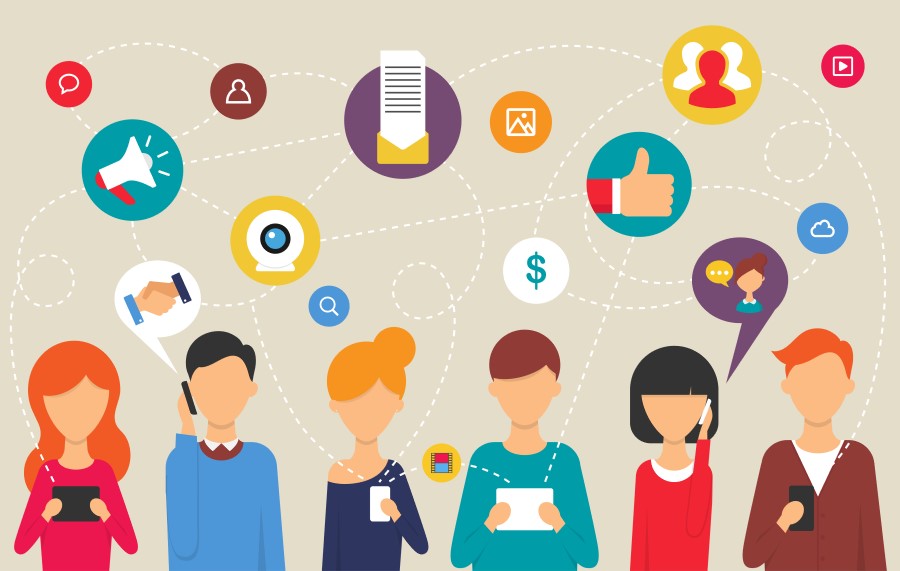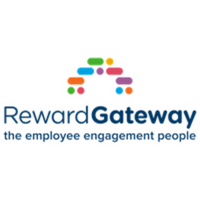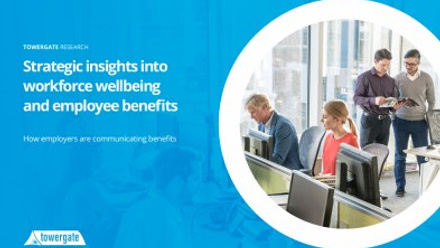10 ways to communicate your everyday financial wellbeing benefits to a remote workforce

However, it's not always safe to assume all your people know what support exists or how to access all their benefits. Numerous studies show that you need to repeat your message at least three times (yes, three!) before it really sinks in, while others say you need a certain number of touchpoints (anything from six to 13) before people take action. So, just announcing your benefits scheme to new staff when they join your organisation or hiding it in your employee handbook is definitely not enough to get engagement with it. Below are some creative ways companies have communicated everyday financial wellbeing benefits and are making working through the next phase of the pandemic a little easier on employees — and their back pockets.
1. Collaborate
Get your marketing department and internal communications team on board early when creating a benefits brand. You don’t want any nasty surprises or setbacks before launch, and you want the full support of those in your organisation who have a big impact on communication.
2. Be multi-channel
In advertising, they use the term “effective frequency” to describe the number of times a consumer must be exposed to an advertising message before the marketer gets the desired response. The same is true when it comes to communicating, or marketing, your benefit messages. Take advantage of every piece of communication and mail that goes out to your employees and utilise every channel.
Fortunately, smartphones are emerging as a viable in-house communication tool for offline employees. One company we work with uses an Instagram account dedicated solely to notify new and existing employees of their employee discounts and benefits programmes. It’s a great way to reach their young employee demographic and communicate in a way that’s relevant and fresh.
Embrace employee engagement mobile trends by introducing an employee engagement app to combine your communications and recognition features in an accessible app. This will help to connect your employees to your business (and to one another) no matter where they are.
What’s more, encourage employees to turn on alert notifications so they never miss an important company update and immediately know when there’s a new benefit available that can support their financial wellbeing.
3. Make sure you have a single source of truth
Investing in an employee benefits portal might seem like a big ask, but having an easily accessible (and updatable!) source where any employee can view information about their benefits will make a huge difference to the engagement and uptake of what you have on offer. It gives employees the option to self-serve and, in some cases, access some employee benefits immediately. Having a live portal also means you have the added benefit of being able to update information in real-time.
4. Provide material and motivate with incentives
Having easy access to healthy recipes to cook at home, mindfulness strategies to stay focussed and tips to maintain physical fitness can help employees stay on track and feel well throughout their time away from the office.
We encouraged all of our own employees to use their Wellbeing Allowance to purchase fitness equipment or take up a class to stimulate their mental wellbeing. We also offered to reimburse the cost of a running app to encourage more people to schedule movement in their day and work towards a goal of running 5km.
Our CEO, Doug Butler, increased that incentive by personally committing a £16 donation to any employees’ charity of choice once they sent him a screenshot of their 5km run or walk or 25km cycle. It was a fantastic way to give employees permission to leave their work (from home) station and get outdoors, while providing an opportunity to support a charity in a time when they might not be able to.
5. Tailor messages and communication
Segment employee communications to different groups or teams within the organisation to improve participation, and increase collaboration for employees to stay connected on-the-go. This may mean sending your message at different times, in different ways to reach the different people at your organisation. Remember, all employees (no matter where they’re located) should be aligned and feel connected with their organisation.
6. Promote existing benefits
Now is the time to promote the benefits that may save staff money, especially when you focus on the things that your employees are worrying most about. This might include:
- Access to an Employee Assistance Programme (EAP): Some employees only consider accessing an EAP if they are dealing with grief or mental health challenges, and may need reminding that they may be able to access financial education or advice through your provider.
- Making the most of a discounts programme: With schools and gyms closed, more families are purchasing technology, fitness equipment and even gardening gear as they spend time at home. Saving money on any of these purchases, in addition to everyday groceries, can make a huge difference to families on a reduced income.
- Providing a salary advance or small loan: Many employees may be reworking their household budgets, particularly if the earning capacity for those living under the same roof has taken a hit. Paying employees a salary advance or offering small loans on request can help alleviate the pressure of staying on top of rent, mortgage repayments or ongoing bills.
- Making technology and whitegoods purchases easier: Whether employees want to upgrade or replace their technology, or urgently finance a replacement washer/dryer, these can take a back seat during pressing financial times. Ease the burden by offering free financing with a technology salary sacrifice benefit.
- Support bike usage and ownership: With tube and bus fares projected to rise, the “new normal” will hit commuters’ wallets. Help employees improve their wellbeing and save money with a Cycle to Work scheme to help your employees buy cycling equipment through salary sacrifice. Cycle to Work benefits both employers and employees – your people can pay for a new bike pre-tax, straight from their pay cheque, and employers benefit from National Insurance contribution savings.
7. Be an advocate for your initiative yourself
Use the benefits available religiously and talk about them wherever you go. Get the rest of your HR team to promote them internally on your employee engagement platform and have someone on the team start a blog or video series introducing any new initiatives, or add some fun announcements to your homepage. If you all love it, your staff will love it too.
We created our own teaser campaign on our employee engagement platform. The campaign consisted of a 10-day countdown. Each day we opened one of the “doors” to reveal information about the benefit and what employees could use their allowance for. We even set up “Wellbeing Champions” to help spread awareness. This campaign was much more engaging and we even included our employees’ faces in the doors instead of using stock photo content.
8. Encourage manager participation
Manager participation is a surefire way to increase engagement with your people. If you’ve just implemented a new employee engagement platform, for example, your managers can teach employees the ins and outs of the platform.
Have managers dedicate specific time, where individuals can sign up for 10 to 15-minute windows to virtually walk through using the platform with the manager. They can learn how to log in, submit a recognition post, read posts for any department or group, and like, comment on or share posts.
These check-ins are easier to maintain if managers are in the habit of having employee one-on-ones on a regular basis. Set a standard that managers will set aside time to check-in with each employee to learn what is working well and where they need help.
These regular check-ins will do a lot to connect employees to the team, and the added opportunity to remind employees of the online engagement platform will help connect them to the company as a whole. At the end of the day, your frontline managers are key to communicating information to your employee community. If supported with the right information and training, these leaders can help drive job satisfaction by encouraging and educating their team members to participate more fully in benefits programmes.
9. Find your communications champions
Along with encouraging manager participation and offering employees guidance, pick champions to buddy up and help those who are not as comfortable with technology. They should be first in line to help you spread awareness of company news and offer feedback on what’s resonating with their teams.
On our platform, you can even give “blogger rights” to your most vocal employees to give them a chance to share the news with the wider company. These stories can be informal, brief and only take 20 to 30 minutes to put together before being published on your employee communications platform. You just have to ask them what benefit they use, why, and what impact it’s had on them (it might be a financial, mental, or even relational benefit!), then spend another 15 minutes summarising that into a 250-400 word blog post, and 5 minutes to publish it. And voila!
Whether you publish these employee stories weekly or monthly, by the end of the year you’ll have a collection of 12-50 stories from your people that demonstrate how employee benefits make a difference in people’s day-to-day lives! These also make compelling reading when you are recruiting new talent.
One way to identify “up and coming” champions is to see who your most followed employee is. Besides your CEO, who is sharing the news that people engage with the most?
10. Embrace real-time and micro-moments
Think about HR flashpoints, key national days and life events employees may be experiencing in the year. Integrate the communications and plan your strategy well in advance to get the highest impact. For example, pay reviews, upcoming benefits enrolment windows, and even thinking ahead to Christmas. By dovetailing your benefits initiatives together, they will lend each other support and appear more integrated to employees.
Use specific branding or pages to make real-time announcements. If you have special corporate perks or a window of time when employees can apply for certain benefits, use branded images and announcements to let people know. You can publish them in your regular comms channels, or run an email campaign with the image leading people to your employee benefits hub, where they can get more information.
Whether you employ just one or all of these tips, the key to successful employee communication efforts is to try a variety of different methods, channels and messages. Assume your people are always open to hearing about the benefits that are going to improve their work and personal life, and err on the side of safety. Rinse and repeat the message, keep it fresh and keep it front of mind. That way both new and existing employees always have more than enough information about your benefits programme that can help to support them with everyday financial wellbeing challenges.
Above all, choose an amazing employee engagement provider that can do all this for you and support you through the whole process. Having a dedicated team who understands your goals is key to transforming your company.
The author is Robert Hicks, group HR director at Reward Gateway.
This article is provided by Reward Gateway.
Supplied by REBA Associate Member, Reward Gateway
We help the world's leading companies with an employee engagement platform.







